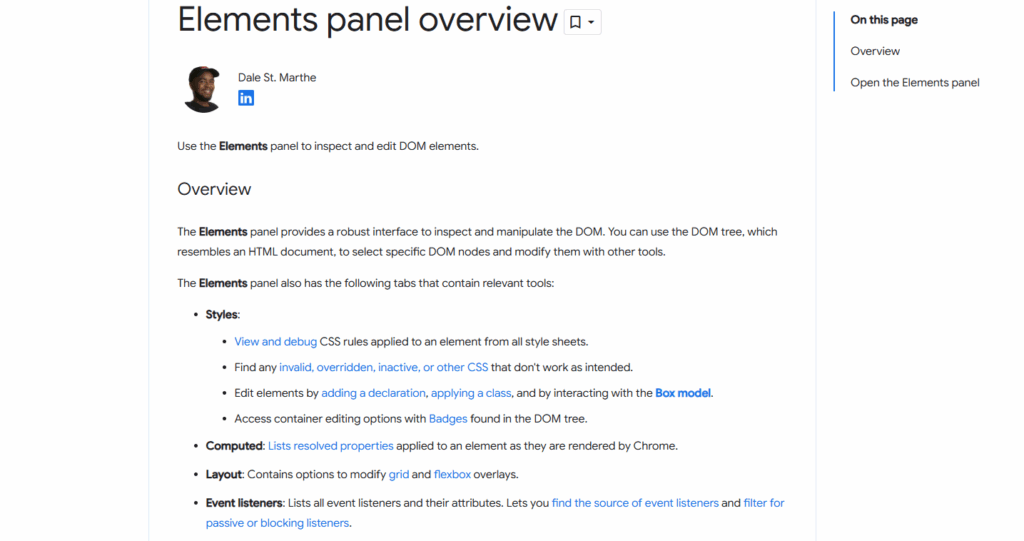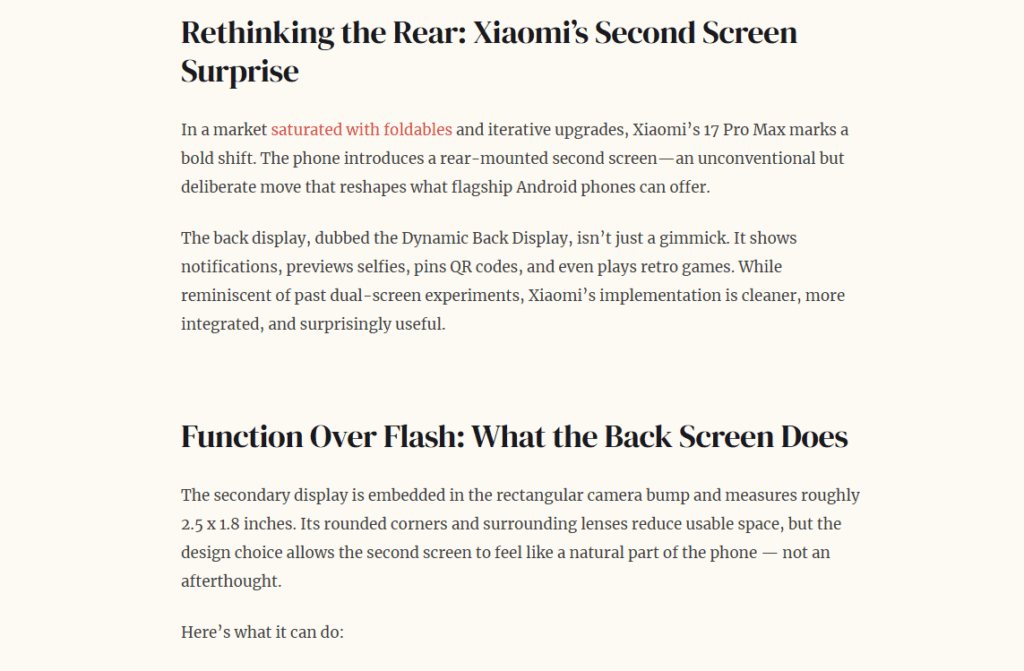Simple Structures Create Complex Wins for SEO
Who writes like this and why? Anyone with a keyboard and internet. From hobby bloggers to enterprise SEOs, the structure makes all the difference. What matters? Post structure for SEO. When? Every time a publish button gets clicked. Why? Because the internet rewards those who explain things in a clean, tidy manner. How? By structuring content clearly, consistently, and intentionally.
Search engines require organisation. They behave a bit like a high school librarian sorting a stack of 400 unlabeled VHS tapes. The better the labelling, the quicker the discovery. And people scanning content want answers faster than a microwave curry on a Tuesday night.
So, in walks post structure for SEO with its clean headers, confident H1s, efficient subheaders, and predictable rhythm. Structure builds trust and helps Google. It guides readers and wins the click. 🥇
Hierarchy Speaks Louder Than Words
Search engines interpret a post by scanning its headline structure. A clear hierarchy means fast comprehension. A wandering structure leads to confusion. Bold H1 at the top signals the main topic. Direct H2s outline the core points, and supporting H3s nest underneath.
This system feeds the algorithms well. It also reads like a map for those scrolling on small screens while pretending to pay attention in meetings.
| Tag | Purpose | Placement |
| H1 | Core post title | One per page |
| H2 | Primary topic sections | Each main point |
| H3 | Details or subpoints | Beneath each H2 |

Structured headers like these provide landmarks. They say “this section explains this bit” without readers needing to decode anything. Predictability invites engagement. 🧭
Snippets Start With Structure
Answer Boxes, Quick Answers, Featured Snippets. These aren’t SEO jargon for decoration. These are high-visibility placements on search results pages. Earning them begins with structure.
Short answers belong close to the top. Bullet points, numbered lists, tables. These pull through as snippets when presented clearly under the appropriate heading.
Structure can turn a regular post into a Google-endorsed answer card. A question-style H2 followed by a single-sentence paragraph delivers this outcome reliably. For example:
H2: What is post structure for SEO?
Post structure for SEO organises content using header tags (H1, H2, H3) to improve comprehension and search visibility.
This gets picked up real quick.
💡 Tips for snippet attraction:
- Start with a clear question as an H2
- Answer directly in 40–60 words
- Use ordered lists for step-based content
- Keep tables simple and scannable
List Posts Like a Grocery Receipt
Listicles remain SEO’s most dependable foot soldiers. They tell search engines exactly what’s going on, like a shopping list with prices. The best-performing ones begin immediately with the list, without too many stage-setting preambles.
For the term “budget wedding ideas,” a structured post should look like this:
- H1: Budget Wedding Ideas
- H2: Garden Wedding
- H2: City Hall Wedding
- H2: Destination Wedding for Less
Each H2 acts as an item, a destination on the itinerary, a point with no ambiguity. Posts which position list items under H2s outperform those that bury them three scrolls down after a personal story about Aunt Karen’s third marriage.
💥 Benefits:
- Faster indexing
- Easier navigation
- Immediate user satisfaction
- Better click-through from snippets
Side-by-side comparison of two blog posts: one structured with H2s for each idea, one structured without:

With (Source: https://valentusproducts.com/xiaomi-17-pro-max-dual-screen-design/ )

Without (Source: https://www.bbc.com/news/articles/cdj2m3rrk74o)
Step-by-Step Posts Deserve Steps
“How-to” content must behave like instructions for assembling flat-pack furniture, minus the Allen key-induced rage. These posts deliver best results when each step begins with Step X in the H2 tag.
For “how to poach an egg,” here’s what works:
- H1: How to Poach an Egg
- H2: Step 1: Boil Water with Vinegar
- H2: Step 2: Swirl the Water
- H2: Step 3: Drop the Egg In
Avoid long-winded ramblings before getting into the actual instructions. A post structure for SEO favours immediacy. The sooner a reader finds the method, the sooner Google considers the post efficient.
🐣 What helps:
- Include “Step” in H2 for clarity
- Follow with a 1–2 line description
- Add visual indicators (arrows, emojis, numbers)
- Place steps as H2s for snippet-friendliness
Definition Posts Open Doors Early
Definition-style posts give search engines an excuse to create a clean knowledge panel or pull a direct answer. The format works best when the term being defined appears immediately in a subheader, followed by a sentence beginning with “[Keyword] is…”
This layout creates confidence. Google identifies it fast. Users appreciate the straightforward delivery. Pages that put this definition before the fold attract more attention from both human and machine eyes.
💡 Structural winning move:
- Subhead directly after title
- Place the sentence “X is Y” at the top
- Maintain brevity
- Use the exact match keyword early

Tables Simplify Everything
When content includes numbers, comparisons, or choices, structure rewards those who table it. Tables communicate dense information quickly. Post structure for SEO becomes richer when a table sits close to the relevant H2.
Example table for SEO metrics:
| Metric | Purpose | Recommended Format |
| H1 | Page topic | One per post |
| H2 | Section headings | Core concepts |
| Paragraphs | Expand each section | Under H2s |
| Lists | Add clarity | Bullets or numbered |
| Tables | Present comparisons | Aligned data points |
Search engines recognise tables as organised structures. Users view them as shortcuts to understanding.
📊 Strong table signals:
- Data consistency
- Column headers with clarity
- Labels over jargon
- Placed above the fold when possible
Keyword Placement Needs Harmony
Strategic repetition of the focus keyword, post structure for SEO, reinforces the topic without sounding robotic. Search engines detect placement patterns. Readers feel the alignment. The sweet spot balances frequency with flow.
Ideal locations for the term:
- Post title (H1)
- Opening paragraph
- One H2
- Middle body paragraph
- Final 200 words
Each mention must feel natural. Forced insertion weakens both the prose and the ranking potential.
🎯 Where to aim:
- Title and subheaders
- List item titles
- Definition sections
- Image alt text
- Snippet-worthy paragraphs
Internal Linking Keeps Google Home
Posts that live alone drift into the digital wilderness. Internal links keep them visible and relevant. Link to pillar pages, related blogs, glossary terms, and support articles. Each H2 becomes a launchpad.
Structured posts perform better with internal links placed in clear, contextual paragraphs. Don’t isolate links in floating blocks. Instead, weave them into explanatory sentences under H2s.
🚀 Where structure helps links:
- Anchor links beneath H2s
- Glossary pages for definitions
- Crosslinks to deeper guides
- Call-to-action blocks near tables
Structured Intros Keep Eyes On Page
Introductory paragraphs that explain who, what, when, why, and how give context to both the reader and search engine. Each post benefits from an introduction that covers:
- Audience
- Subject
- Purpose
- Timing
- Method
Introductions placed directly under the H1 signal intent. Structured intros improve dwell time, increase scroll depth, and enhance snippet eligibility.
👓 What to place in intros:
- The core problem
- What the reader will gain
- An example for context
- Smooth transition to H2
Rhythm Builds Reputation
Every well-structured post follows a visual rhythm. This rhythm creates consistency that search engines favour and readers subconsciously trust. Formatting rhythm includes:
- Regular intervals between headers
- Predictable sentence lengths
- Consistent paragraph breaks
- Identical styling for list items
By maintaining rhythm, each post trains both Google and readers to trust the site’s output. Repetition becomes recognition.
🎼 What builds rhythm:
- Lists after every few paragraphs
- Headers every 200–300 words
- Visual breaks (tables, quotes)
- Emoji placements at emotional peaks 😉
Reflecting on Simplicity and Power
Post structure for SEO controls how content behaves online. It impacts ranking signals, snippet eligibility, bounce rate, and scroll depth. Clean layout wins twice – once with the algorithm, once with the audience.
Effective structure respects the logic of both robots and humans. It lays out the table, serves the meal, and hands over the dessert spoon. When posts align with expectations, everything clicks.
🧠 Key reflections:
- Structure delivers results faster than cleverness
- Predictability ranks higher than creativity
- Simplicity attracts attention from all sides
All things considered, structured posts allow content to punch above its word count. They open the door for authority, visibility, and trust. Structure earns status, builds longevity and proves skill. 💡





